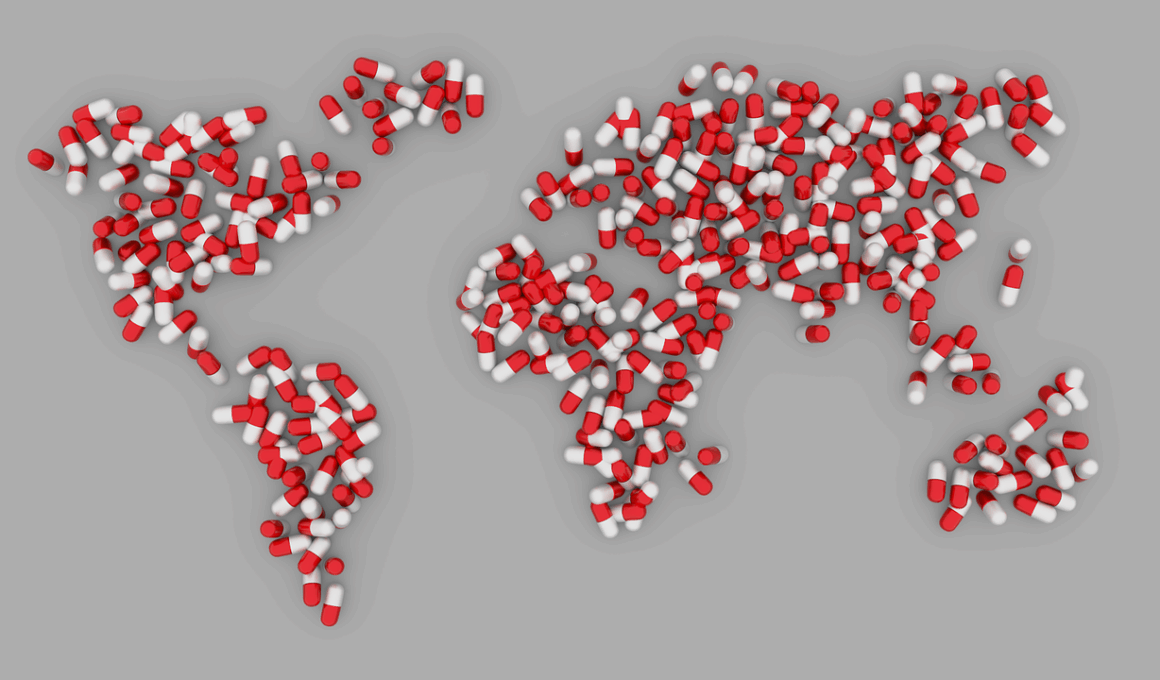Strategies to Reduce Waste in Healthcare Spending
Reducing waste in healthcare spending is imperative for improving system efficiency and patient outcomes. Many hospitals and clinics face significant financial constraints, which can lead to inefficiencies in managing resources. Implementing strict cost-containment strategies is one approach to counteracting waste. For example, analyzing purchasing patterns for medical supplies can uncover opportunities for bulk purchasing discounts. Additionally, hospitals can streamline their supply chain management processes. Education and training for healthcare professionals on the importance of fiscal responsibility can lead to better decision-making when it comes to resource utilization. Strong leadership commitment towards expense accountability plays a crucial role in ensuring adherence throughout the organization. Monitoring patient outcomes relative to costs not only incentivizes efficient spending but also improves overall care quality. Moreover, using data analytics in decision support systems can help discern unnecessary procedures or tests, guiding clinicians toward more cost-effective practices. Ultimately, focusing on eliminating waste leads to more sustainable financing in healthcare while preserving exemplary patient care standards.
One valuable strategy to cut waste involves enhancing communication within healthcare environments. Miscommunication or lack of sharing information results in duplicated tests or procedures. Establishing effective communication tools can address this issue. Transitioning to integrated electronic health records or leveraging telehealth platforms can minimize redundancies. Digital collaboration tools enable real-time sharing of patient histories and medical necessities. Furthermore, implementing user-friendly systems ensures that healthcare workers effectively embrace new technologies. Training can significantly improve the adoption rate, fostering a seamless flow of information. Transparency in billing practices can help patients better understand their treatment costs, potentially reducing unnecessary consultations. Moreover, involving patients in their care plans encourages them to make informed decisions about their treatments, which can further limit waste. Implementing feedback mechanisms, such as surveys, can highlight areas needing improvement or waste reduction. Ultimately, focusing on communication enhances teamwork and efficiency, fostering a culture of collaboration that reduces healthcare spending accordingly.
Performance-Based Compensation Models
Adopting performance-based compensation models serves as another approach to minimize waste in spending. Traditional payment models often reward volume over quality; this can lead to unnecessary procedures and tests. Transitioning to value-based payments aligns provider incentives with patient outcomes, emphasizing quality care. For example, accountable care organizations (ACOs) focus on coordinating care, which ensures patients receive necessary interventions in the right place at the right time. Financial incentives can motivate healthcare professionals to improve the quality of care, helping tackle wasteful practices without compromising patient health. Moreover, offering bonuses for reducing readmission rates highlights the importance of effective discharge planning and post-operative follow-ups, which can significantly reduce waste associated with preventable complications. Tracking clinician performance through patient outcomes can provide valuable insights to identify areas for enhancement. By integrating feedback loops within healthcare delivery systems, professionals can continually improve processes, preventing further waste. Implementing these compensation models involves initial changes but ultimately creates more cost-effective and efficient systems.
Streamlining administrative processes is another critical strategy in reducing wasteful spending in healthcare. Complex billing systems and insurance claims can delay payments and create significant administrative burdens. Simplifying these processes can lead to more efficient revenue cycles and lower operational costs. Investing in administrative technology, such as billing software, can facilitate real-time tracking of outstanding payments and claim statuses. Automation in administrative tasks helps staff focus on patient care rather than paperwork. Moreover, fostering strong relationships with insurers can expedite claims processing, reducing denials and enhancing revenue. A review of administrative policies and performance can identify redundancies and recommend improvements. Training administrative staff to maximize technology can significantly streamline billing practices, ensuring accuracy and reducing waste. Furthermore, encouraging a culture of accountability among staff leads to better compliance and efficiency. Establishing clear performance metrics related to administrative tasks can aid in highlighting areas for improvement as well. Increasing the efficiency of administrative processes not only mitigates waste but also helps secure the financial health of healthcare organizations.
Utilizing Telemedicine
Telemedicine presents transformative potential in reducing healthcare spending by increasing access to care and minimizing overhead costs. Virtual consultations can save patients both time and money while reducing the need for physical office spaces. Telemedicine eliminates travel expenses and time lost from work, encouraging more patients to seek necessary care. Furthermore, telemedicine enhances follow-up care, which can reduce hospital readmissions and improve treatment adherence. Healthcare providers can extend services to remote or underserved areas without incurring expenses associated with establishing new facilities, ultimately increasing patient access. Leveraging telemedicine can also optimize provider time management, allowing for more appointments per day without sacrificing quality care. Training providers on effective virtual care techniques can enhance the patient experience and make telemedicine more efficient. Integrating telehealth services into traditional healthcare models can lead to better care coordination. Additionally, insurers are increasingly recognizing telehealth’s effectiveness, offering reimbursement for virtual consultations. Given its numerous advantages, adopting telemedicine is an essential strategy for combating waste in healthcare spending.
Another pivotal strategy for reducing healthcare spending waste is the establishment of preventive care initiatives. Focusing on prevention rather than reactive treatments can significantly impact overall expenditures. By encouraging regular health screenings and wellness programs, healthcare organizations can avert chronic diseases that lead to high-cost interventions. For example, proactive management of conditions such as hypertension or diabetes can minimize complications that result in hospitalizations and expensive treatments. Community outreach and education programs can raise awareness about the importance of preventative measures, leading to healthier populations and reduced long-term expenses. Partnering with local organizations can create programs that engage populations in healthy behaviors. Additionally, providing incentives for routine health check-ups can motivate patients to prioritize their well-being. This effort collectively leads to a culture of health that values prevention, reducing the burden on the healthcare system. Furthermore, preventive care initiatives can also improve productivity by decreasing absenteeism due to illness. Investing resources into prevention becomes a wise, long-term strategy in mitigating waste while enhancing population health outcomes.
Enhancing Drug Management
Improving medication management practices can also play a vital role in minimizing waste in healthcare spending. Mismanagement of prescriptions, including unnecessary medications or incorrect dosages, can lead to increased healthcare costs. Establishing protocols for medication reconciliation upon patient admission and discharge ensures accuracy in prescriptions and reduces adverse drug events. Integrating pharmacy services within healthcare systems can support effective medication management. Additionally, utilizing electronic prescribing can enhance the accuracy of prescriptions, reducing the chance of errors. Medication therapy management (MTM) services allow pharmacists to engage with patients, ensuring they understand their medications, which enhances adherence. Educating patients about their prescriptions can further limit waste related to medication non-adherence. Moreover, implementing formularies and promoting the use of generic medications help control pharmaceutical costs. Health systems should also foster collaboration between medication providers and physicians to optimize medication regimens. By refining drug management practices, healthcare systems can significantly decrease waste while preserving patient safety and ensuring proper therapeutic outcomes.
Lastly, implementing robust data analytics tools can profoundly enhance waste reduction strategies in healthcare spending. Advanced analytics can uncover inefficiencies and highlight trends, enabling organizations to address waste effectively. For instance, analyzing utilization data empowers providers to identify overused services or procedures, facilitating informed decisions. Moreover, predictive analytics can forecast patient needs, ensuring adequate resource allocation and minimizing unnecessary expenditures. Data-driven insights enable better negotiation strategies with suppliers and payers. Furthermore, implementing performance dashboards provides a comprehensive view of key metrics and outcomes, empowering healthcare leaders to make timely and strategic decisions. Training staff to leverage analytics systems ensures that data informs clinical and operational workflows properly. Ultimately, cultivating a data-centric culture heightens awareness of efficiency across the organization. By fostering collaboration between IT and healthcare professionals, systems can obtain actionable insights that drive waste reduction. Employing analytics fosters continuous improvement, ultimately leading to a more sustainable and cost-effective healthcare financing landscape that benefits all stakeholders.


